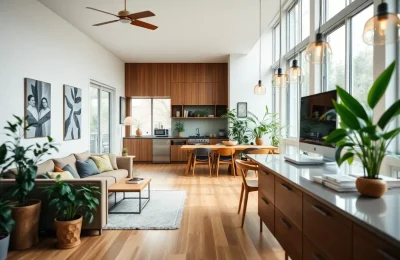
When you picture a Passive House, what comes to mind? Triple-pane windows, maybe. A whiz-bang ventilation system. Thick, super-insulated walls. Sure, those are the rock stars. But there’s a silent, stalwart guardian working overhead that rarely gets the credit it deserves: the roof.
Honestly, in the quest for ultimate energy efficiency, the roof isn’t just another component. It’s the capstone. Literally. Think of your house as a thermos. A cheap, thin thermos loses heat (or cool) quickly. A high-performance one maintains temperature for hours. The roof in a Passive House is that sealed, insulated lid—the final, critical piece that makes the whole system work.
More Than Just Shingles: The Roof as a Thermal Envelope Superstar
In standard construction, a roof’s job is pretty straightforward: keep the weather out. In Passive House design, its job description expands… dramatically. It becomes a key player in creating the continuous, airtight, and super-insulated thermal envelope. This is the non-negotiable barrier separating the conditioned, comfortable interior from the unpredictable outside world.
The Insulation Imperative
Let’s talk about the big one: R-value. This is the measure of thermal resistance. For a Passive House, the numbers aren’t just a little higher—they’re in a different league. We’re not talking about stuffing a few fiberglass batts between the rafters.
Passive House roofs often require R-values of 50, 60, or even higher. Achieving this frequently means using thick, continuous layers of rigid insulation boards—materials like expanded polystyrene (EPS), mineral wool, or polyiso—installed either above the roof deck or in a combination of locations to eliminate thermal bridging. That’s the technical term for weak spots where heat loves to escape, like through the wooden rafters themselves.
| Common Roof Insulation Type | Key Characteristic in Passive House |
| Mineral Wool | Excellent fire resistance and sound absorption; vapor permeable. |
| Expanded Polystyrene (EPS) | Cost-effective, high R-value per inch, resistant to moisture. |
| Polyisocyanurate (Polyiso) | Very high R-value per inch; often has a foil facing that acts as a radiant barrier. |
Sealing the Deal: Airtightness is Everything
You can have all the insulation in the world, but if air is whistling through the gaps, you’re fighting a losing battle. Airtightness is the soul of the Passive House standard. The roof-to-wall connection is one of the most critical—and最容易出问题的—details.
Here, specialized airtight membranes and tapes are used to create a perfect seal where the roof structure meets the top of the wall. It’s meticulous, painstaking work. But when done right, it ensures that the only fresh air entering the home comes through the controlled, energy-efficient ventilation system, not through random leaks in the attic. No drafts. No wasted energy. Just quiet, consistent comfort.
Beyond the Basics: The Roof’s Multifaceted Role
The roof’s job isn’t just passive (pun intended). It’s an active system contributing to the home’s overall performance in a few surprising ways.
Solar Synergy
That large, uninterrupted south-facing roof plane is a prime piece of real estate. It’s the perfect platform for solar panels. In fact, integrating solar panels for passive house energy production is a natural fit. The home’s drastically reduced energy load means a smaller, more cost-effective solar array can often meet 100% of its energy needs, pushing it toward net-zero or even net-positive status.
Venting and Vapor Control
Managing moisture is crucial. A roof assembly that can’t dry out is a roof assembly destined for failure. The specific strategy—whether it’s a “hot roof” (insulation directly under the roofing material) or a “cold roof” (with a vented airspace)—depends on the climate and materials. The goal is always the same: prevent condensation within the assembly, which can lead to mold and rot, compromising both air quality and structural integrity.
Durability by Design
Here’s a cool side effect: a Passive House roof often lasts longer. By maintaining a stable interior temperature and humidity level, and by meticulously managing moisture within the assembly, we eliminate the thermal expansion, contraction, and condensation that can degrade roofing materials over time in a conventional home. It’s a testament to the idea that building better from the start pays off in the long run.
Common Pitfalls and How to Avoid Them
Okay, so it’s not all easy. Getting the roof right in a Passive House is where many projects can stumble. Awareness is half the battle.
First up: thermal bridging. It’s the arch-nemesis. A standard skylight installed without a thermally broken curb? A bridge. A roof rafter that extends from the interior to the exterior? A major bridge. These bridges act as highways for heat loss, creating cold spots that can lead to interior condensation and undermining all that expensive insulation. The solution is careful design and the use of thermal breaks—materials that insulate between the inside and outside structural elements.
Secondly, the devil is in the details. Or more precisely, in the penetrations. Every pipe, vent, and wire that passes through the roof deck is a potential leak in your airtight envelope. Each one needs to be meticulously planned, sealed, and flashed. This isn’t a job for a standard roofing crew without specific Passive House experience. The learning curve is real.
A Shelter, A Shield, A System
So, the next time you look at a beautifully designed, ultra-efficient home, don’t forget to look up. That roof is doing so much more than just shedding water. It’s a meticulously engineered system working in concert with the walls, the windows, and the foundation.
It’s the final piece of the puzzle, the cap on the thermos, the guardian of the gentle, even climate within. In the world of Passive House, the roof transforms from a simple shelter into the very thing that makes such profound efficiency and comfort possible. It’s a quiet promise of resilience, whispering that how we build on top matters just as much as how we build everything else.










